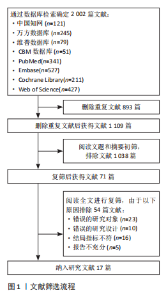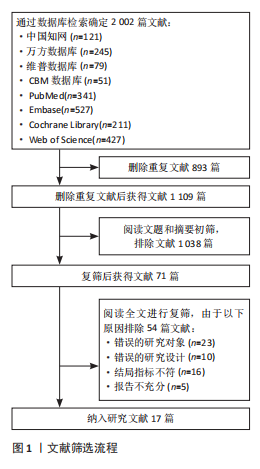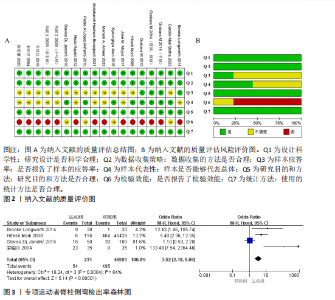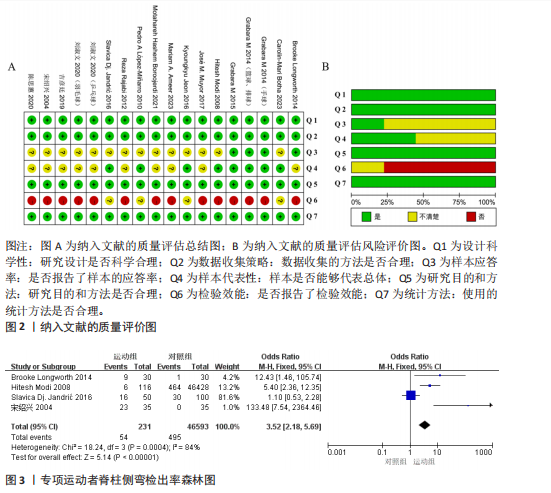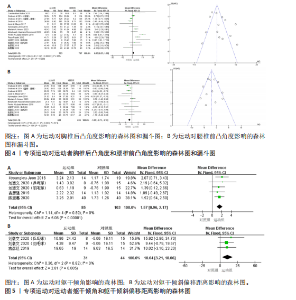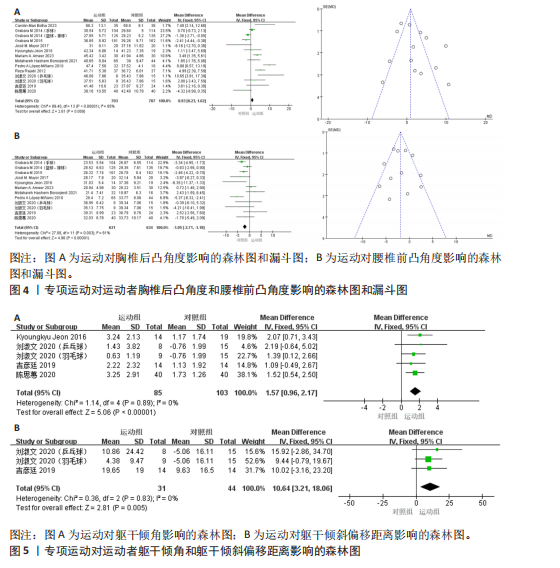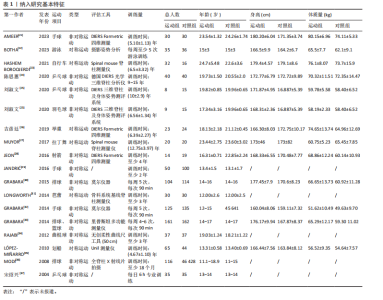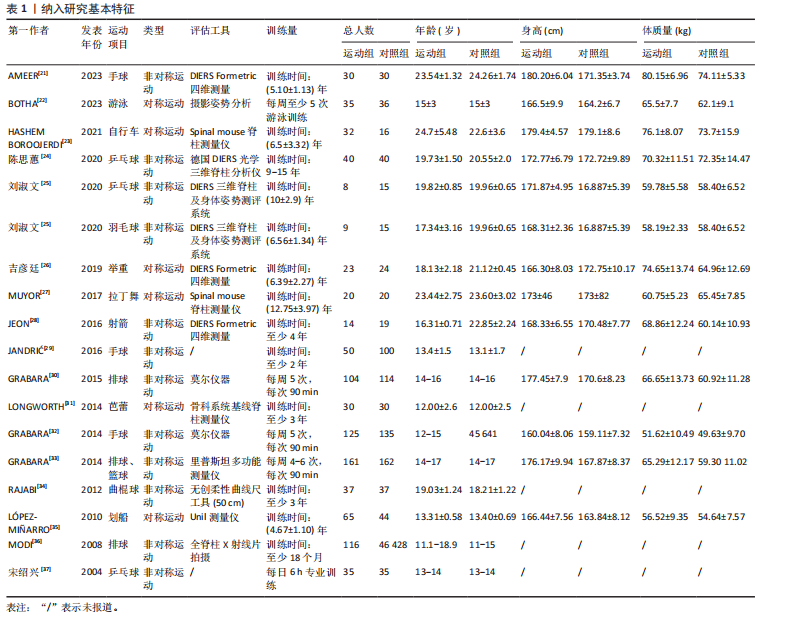[1] BALL JR, HARRIS CB, LEE J, et al. Lumbar Spine Injuries in Sports: Review of the Literature and Current Treatment Recommendations. Sports Med Open. 2019;5(1):26.
[2] 郭丞,尹军,尹思艺.身体功能训练在肩关节运动功能恢复中的应用研究:以优秀男子举重运动员SLAP损伤个案为例[J].首都体育学院学报,2022,34(4):457-464.
[3] 梅宇,蒋艳芳,敖英芳.高水平运动员重大运动伤病特征分析[J].中国运动医学杂志,2018,37(6):510-514.
[4] 杨远,张凯搏,付维力,等.系统评价运动性半月板损伤的流行病学特征[J].中国组织工程研究,2019,23(31):5079-5084.
[5] 孙永生,马鸿韬,李雪.体操运动损伤的流行病学特征、机制与防治策略[J].中国康复医学杂志,2024,39(9):1394-1399.
[6] 杜心如,张西峰,崔新刚.脊柱外科临床解剖学[M].2版.济南:山东科学技术出版社,2020.
[7] 欧阳钧,钱蕾,孙培栋.脊柱生物力学研究的回顾与展望[J].医用生物力学,2021, 36(2):169-176.
[8] 鲍春雨,孟庆华.举重运动员抓举动作脊柱腰椎节段受力特点分析:基于有限元理论[J].天津体育学院学报,2009,24(1): 42-44.
[9] 包蕾,刘卉,高维纬.躯干力量和专项动作对称性对艺术体操运动员脊柱曲度异常的影响[J].武汉体育学院学报,2020, 54(4):74-79.
[10] 娄庆玲,王岸新.长期乒乓球训练对运动员脊柱形态的影响研究[J].当代体育科技,2019,9(28):23-24.
[11] 曹亚萍,李炬,黄明昊,等.成年高尔夫球员腰部损伤风险因素及健康与康复干预策略:Scoping综述[J].中国康复理论与实践,2024,30(6):657-664.
[12] 吕海龙,张春合,向祖兵.网球运动员身体形态的非对称性适应及损伤监控研究进展[J].体育科学,2017,37(9):87-97.
[13] BAŃKOSZ Z, BARCZYK-PAWELEC K. Habitual and ready positions in female table tennis players and their relation to the prevalence of back pain. PeerJ. 2020;8:e9170.
[14] GAWEŁ E, ZWIERZCHOWSKA A. Effect of Compensatory Mechanisms on Postural Disturbances and Musculoskeletal Pain in Elite Sitting Volleyball Players: Preparation of a Compensatory Intervention. Int J Environ Res Public Health. 2021;18(19):10105.
[15] MOUSAVI L, SEIDI F, MINOONEJAD H, et al. Prevalence of idiopathic scoliosis in athletes: a systematic review and meta-analysis. BMJ Open Sport Exerc Med. 2022;8(3):e001312.
[16] KENANIDIS E, POTOUPNIS ME, PAPAVASILIOU KA, et al. Adolescent idiopathic scoliosis and exercising: is there truly a liaison? Spine (Phila Pa 1976). 2008; 33(20):2160-2165.
[17] BETSCH M, FURIAN T, QUACK V, et al. Effects of athletic training on the spinal curvature in child athletes. Res Sports Med. 2015;23(2):190-202.
[18] CROMBIE IK. The Pocket Guide to Critical Appraisal. London: BMJ Publishing Group, 1996.
[19] CHANDLER J, CUMPSTON M, LI T, et al. Cochrane handbook for systematic reviews of interventions. Hoboken: Wiley, 2019.
[20] HIGGINS JP, THOMPSON SG, DEEKS JJ, et al. Measuring inconsistency in meta-analyses. BMJ. 2003;327(7414):557-560.
[21] AMEER MA, ABDEL-AZIEM AA, ABD-ELTAWAB AE. The impact of anthropometric measures on plantar pressure distribution in male handball players and non-athletes: A cross-sectional study. J Bodyw Mov Ther. 2023;36:55-61.
[22] BOTHA CM, ROSSOUW F, MEYER PWA, et al. Comparative upper-quarter posture analysis of female adolescent freestyle swimmers and non-swimmers. Eur J Sport Sci. 2023;23(1):36-43.
[23] HASHEM BOROOJERDI M, RAHIMI A, ROOSTAYI MM, et al. Thoracic and Lumbar Sagittal Spinal Curvature Adaptations between Elite Iranian Road and Speed Cyclists. J Biomed Phys Eng. 2021;11(3): 297-304.
[24] 陈思蕙,王泽平,李拖晓,等.右手持拍男性乒乓球运动员脊柱形态特征的研究[J].宁波大学学报(理工版),2020, 33(1):116-120.
[25] 刘淑文,宋雅伟,李江.女性羽毛球、乒乓球运动员和普通大学生的脊柱形态测量分析[J].四川体育科学,2020,39(4):24-27.
[26] 吉彦廷,宋雅伟.长期运动负荷对举重运动员脊柱形态的影响[J].中国康复医学杂志,2019,34(6):702-706.
[27] MUYOR JM, ZEMKOVÁ E, CHREN M. Effects of Latin style professional dance on the spinal posture and pelvic tilt. J Back Musculoskelet Rehabil. 2017;30(4):791-800.
[28] JEON K, KIM S. Effect of unilateral exercise on spinal and pelvic deformities, and isokinetic trunk muscle strength. J Phys Ther Sci. 2016;28(3):844-849.
[29] JANDRIĆ SĐ. Differences in postural disturbances between female adolescents handball players and nontraining peers. Vojnosanit Pregl. 2016;73(4):337-342.
[30] GRABARA M. Comparison of posture among adolescent male volleyball players and non-athletes. Biol Sport. 2015;32(1):79-85.
[31] LONGWORTH B, FARY R, HOPPER D. Prevalence and predictors of adolescent idiopathic scoliosis in adolescent ballet dancers. Arch Phys Med Rehabil. 2014; 95(9):1725-1730.
[32] GRABARA M. A comparison of the posture between young female handball players and non-training peers. J Back Musculoskelet Rehabil. 2014;27(1):85-92.
[33] GRABARA M. Anteroposterior curvatures of the spine in adolescent athletes. J Back Musculoskelet Rehabil. 2014;27(4):513-519.
[34] RAJABI R, MOBARAKABADI L, ALIZADHEN HM, et al. Thoracic kyphosis comparisons in adolescent female competitive field hockey players and untrained controls. J Sports Med Phys Fitness. 2012;52(5):545-550.
[35] LÓPEZ-MIÑARRO PA, ALACID F, RODRÍGUEZ-GARCÍA PL. Comparison of sagittal spinal curvatures and hamstring muscle extensibility among young elite paddlers and non-athletes. Int J Sports Med. 2010;2(11):301-312.
[36] MODI H, SRINIVASALU S, SMEHTA S, et al. Muscle imbalance in volleyball players initiates scoliosis in immature spines: a screening analysis. Asian Spine J. 2008; 2(1):38-43.
[37] 宋绍兴.少年乒乓球运动员与普通中学生某些身体形态指标对比分析[J].中国运动医学杂志,2004,23(4):428-430.
[38] ZWIERZCHOWSKA A, GAWEŁ E, MASZCZYK A, et al. The importance of extrinsic and intrinsic compensatory mechanisms to body posture of competitive athletes a systematic review and meta-analysis. Sci Rep. 2022;12(1):8808.
[39] CHENG JC, CASTELEIN RM, CHU WC, et al. Adolescent idiopathic scoliosis. Nat Rev Dis Primers. 2015;1:15030.
[40] VERGARI C, KARAM M, PIETTON R, et al. Spine slenderness and wedging in adolescent idiopathic scoliosis and in asymptomatic population: an observational retrospective study. Eur Spine J. 2020;29(4): 726-736.
[41] YEUNG KH, MAN GCW, SHI L, et al. Magnetic Resonance Imaging-Based Morphological Change of Paraspinal Muscles in Girls With Adolescent Idiopathic Scoliosis. Spine (Phila Pa 1976). 2019;44(19):1356-1363.
[42] 张浩阳,陈妮桑,石国庆,等.青少年特发性脊柱侧弯胸腰椎生理曲度的影像学研究[J].中国骨伤,2024,37(1):26-32.
[43] 李凯,杨森,武文杰,等.退行性脊柱畸形患者胸腰椎活动度特征分析[J].陆军军医大学学报,2022,44(6):556-562.
[44] NACHEMSON A. The effect of forward leaning on lumbar intradiscal pressure. Acta Orthop Scand. 1965;35:314-328.
[45] 李良,孙民康,何勇明.《体育强国建设纲要》解读:意义、亮点及实施建议[J].中国体育科技,2022,58(1):12-17.
[46] ZEMKOVÁ E, ZAPLETALOVÁ L. The Role of Neuromuscular Control of Postural and Core Stability in Functional Movement and Athlete Performance. Front Physiol. 2022;13:796097.
[47] 孙有平,孙民康.中国竞技体能训练基本问题反思与对策研究[J].成都体育学院学报,2023,49(2):135-142.
[48] 张前锋,李捷,徐晓阳.核心稳定性训练在体育保健中的理论与应用[J].中国康复医学杂志,2015,30(1):76-80.
[49] 吕海龙,张春合,向祖兵.网球运动员身体形态的非对称性适应及损伤监控研究进展[J].体育科学,2017,37(9):87-97.
|
